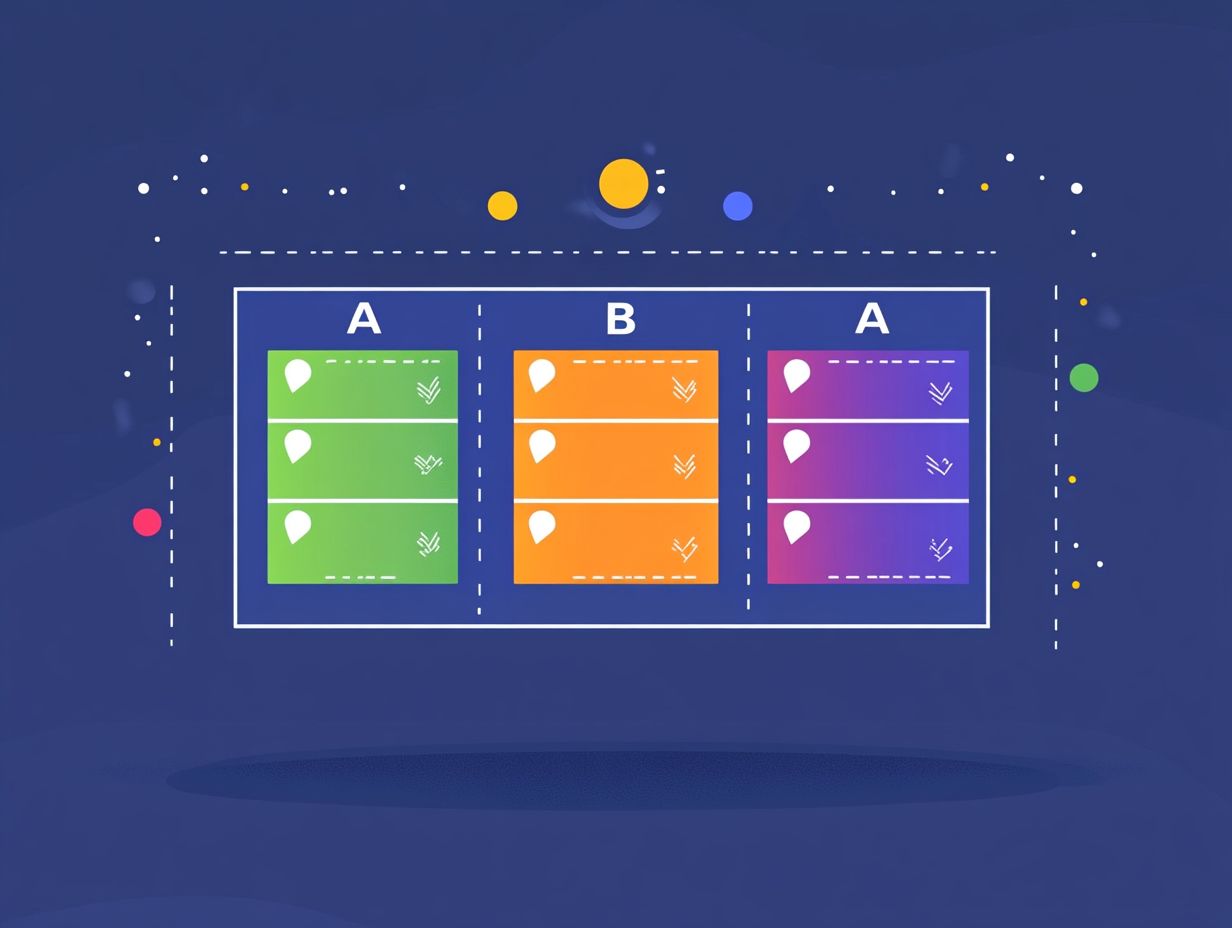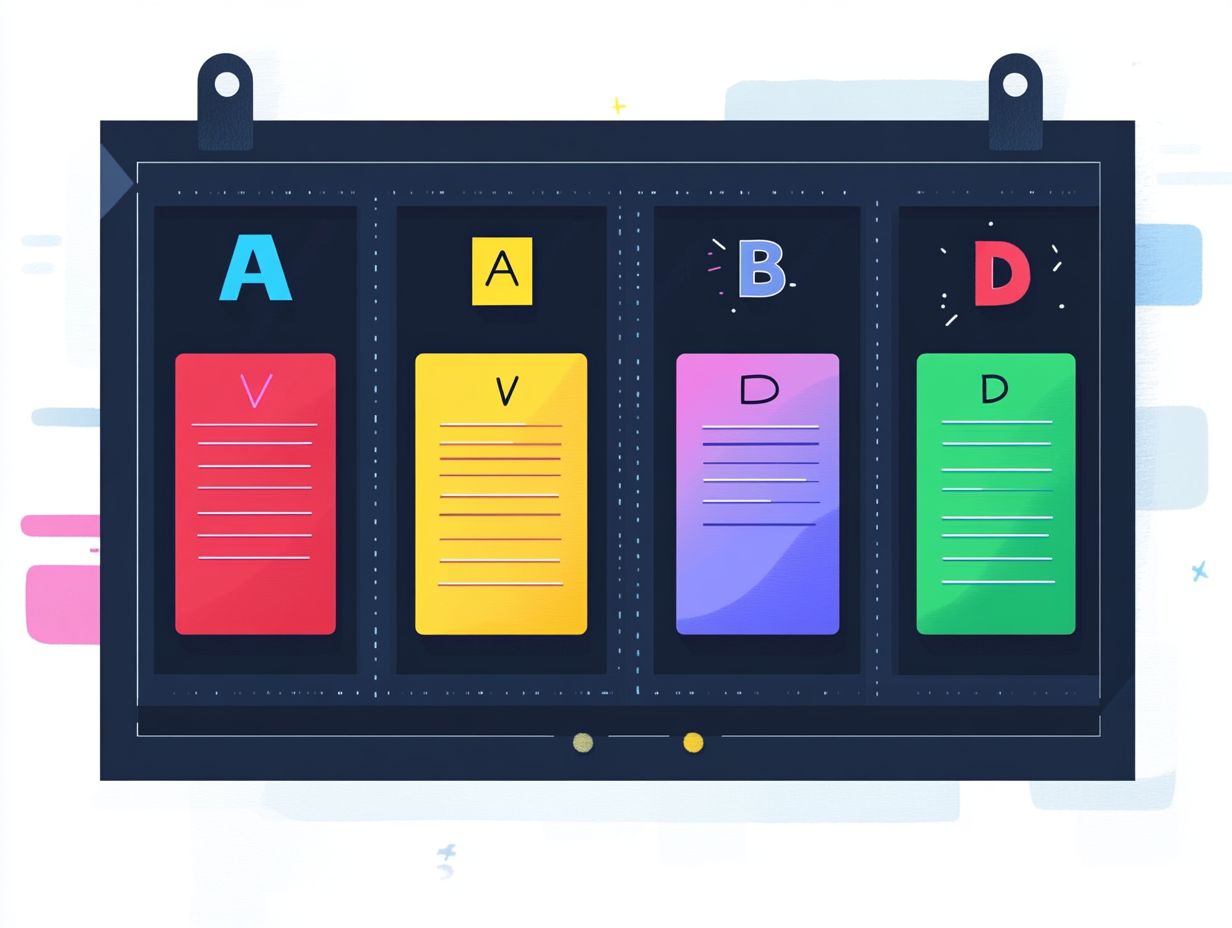The ABCD Method of Task Prioritization
Struggling to keep up with your tasks? The ABCD Method can change that! In today’s fast-paced world, mastering task management is essential for achieving productivity and success.
The ABCD Method provides a structured way to prioritize tasks based on their significance and urgency. This guide explores the ABCD Method, highlighting its advantages for boosting efficiency and effectiveness.
You’ll discover a step-by-step approach to seamlessly integrate this method into your routine.
Real-life examples will showcase its practical application, while expert tips will help you unlock its full potential. Join us in mastering task management today!
Contents
Key Takeaways:

- The ABCD Method is a simple and effective way to prioritize tasks based on their importance and urgency.
- Using the ABCD Method improves your efficiency and effectiveness in completing tasks, resulting in better time management and productivity.
- Implement the ABCD Method by following a step-by-step guide and considering real-life scenarios. Maximize its benefits by using tips for successful task prioritization.
Understanding the ABCD Method
The ABCD Method, crafted by Brian Tracy, is an easy-to-understand time management and prioritization technique that categorizes tasks into five distinct groups: A-tasks, B-tasks, C-tasks, D-tasks, and E-tasks.
By mastering this structured approach, you can significantly elevate your productivity and reach your long-term goals while minimizing time wasted on low-value activities.
What is the ABCD Method?
The ABCD Method streamlines task management by sorting activities into five categories: A-tasks, B-tasks, C-tasks, D-tasks, and E-tasks. This method not only organizes your to-do list but also emphasizes the urgency and significance of each task.
- A-tasks are your top priority. These critical tasks are tied to immediate deadlines or significant outcomes, such as submitting a project or attending an essential meeting.
- B-tasks, while important, carry less urgency. These often involve planning future meetings or prepping for upcoming assignments.
- C-tasks are low-priority items that you might like to tackle, but their completion has little impact if left undone.
- D-tasks can be delegated, allowing you to pass the baton and free up time for more pressing priorities.
- E-tasks are activities that can be eliminated entirely, sharpening your focus on what truly matters.
By categorizing tasks this way, you can boost your productivity, ensuring you invest time and energy where it counts most for optimal results.
Benefits of Using the ABCD Method
Utilizing the ABCD Method unlocks a host of benefits that enhance your efficiency and effectiveness in task management. This approach leads to a remarkable boost in productivity and a clearer state of mind for you and your team.
Efficiency and Effectiveness

The ABCD Method significantly enhances your efficiency and effectiveness by directing your focus toward high-impact tasks that align with your long-term goals.
It encourages you to assess and prioritize your daily responsibilities, helping you understand what truly matters. The method advocates for eliminating low-value activities that clutter your schedule, allowing you to concentrate on critical tasks.
When you prioritize effectively, as the ABCD Method suggests, it becomes simpler to allocate time and resources to activities that drive progress, ultimately boosting your overall productivity. Focusing on essential tasks leads to better outcomes and fosters a sense of achievement and motivation, inspiring you to take further action.
How to Implement the ABCD Method
Implementing the ABCD Method provides you with a structured, step-by-step framework that seamlessly integrates this powerful time management strategy into your daily routine.
By following this approach, you’ll enhance your ability to prioritize tasks and boost your overall productivity.
Start implementing the ABCD Method today and share your experiences with us!
Step-by-Step Guide
To effectively implement the ABCDE Method, follow this step-by-step guide that helps you sort your tasks into A, B, C, D, and E categories based on their urgency and importance. This method serves as a powerful tool for enhancing your productivity by clearly distinguishing between tasks that require immediate attention and those that can wait.
Begin by creating a complete list of all the tasks you aim to complete.
Next, assess each task to determine its significance. Tasks labeled as ‘A’ should be your top priorities that require your immediate focus. ‘B’ tasks are important but not urgent. ‘C’ tasks are less critical. For ‘D’ tasks, think about delegating them to lighten your load. Feel free to eliminate ‘E’ tasks entirely if they no longer align with your goals.
Using these categorization strategies helps you maintain focus and fosters a structured workflow, ultimately leading to improved outcomes and reduced stress.
Examples of Prioritizing Tasks Using the ABCD Method
Grasping how to prioritize tasks using the ABCDE Method can be significantly enriched by exploring real-life scenarios that showcase its practical application in diverse contexts.
This approach highlights the crucial distinction between task urgency and importance, allowing you to navigate your responsibilities with clarity and purpose.
Real-Life Scenarios

In real-life scenarios, the ABCDE Method serves as your trusty guide for prioritizing tasks effectively, ultimately leading to enhanced productivity and better task management.
Imagine you’re a marketing manager sorting your campaign tasks. Here, ‘A‘ tasks represent high-impact actions, like finalizing ad schedules, while ‘C‘ tasks, such as organizing team lunches, can wait until later. This kind of prioritization not only streamlines your workflow but also elevates team morale by ensuring that the most crucial tasks are tackled first.
Consider a software developer applying this method while managing coding projects. ‘B‘ tasks could signify important debugging efforts that directly influence deadlines, resulting in timely releases. The beauty of the ABCDE Method lies in its flexibility, allowing you to adapt it across various environments, effectively navigating competing priorities and significantly boosting your overall productivity.
Tips for Successful Task Prioritization
You can achieve successful task prioritization by leveraging the ABCDE Method, complemented by additional strategies that enhance productivity and streamline delegation within your teams.
Maximizing the ABCDE Method
Maximizing the ABCDE Method requires you to delve into its intricacies while integrating complementary strategies that elevate your time management game, ensuring optimal productivity and task prioritization.
By exploring alternatives like the RICE Framework (which evaluates projects based on Reach, Impact, Confidence, and Effort) and the Eisenhower Matrix (which provides a clear visual distinction between urgent and important tasks), you can gain a well-rounded perspective on task urgency and importance.
When you combine these methods with the ABCDE Method, you not only deepen your understanding of priorities but also enable yourself to make more effective, informed choices about where to direct your efforts. This integrated approach ultimately leads to heightened productivity and greater satisfaction in your work.
Frequently Asked Questions
What is the ABCD Method of Task Prioritization?

The ABCD Method of Task Prioritization is a time management technique that helps you figure out which tasks are most important and urgent.
How does the ABCD Method work?
The ABCD Method divides tasks into four categories:
- A (high importance and urgency)
- B (high importance but less urgent)
- C (less important but urgent)
- D (less important and less urgent)
This approach allows you to tackle critical tasks first.
Why is the ABCD Method effective?
This method helps you avoid feeling overwhelmed. It breaks tasks into manageable categories, ensuring that important tasks don t get sidelined.
Is the ABCD Method suitable for everyone?
Yes! Anyone looking to boost their time management and productivity can use it. It s especially beneficial for those juggling many tasks or struggling with prioritization.
Can I combine the ABCD Method with other techniques?
Definitely! You can pair it with methods like the Eisenhower Matrix, which helps you prioritize tasks based on urgency and importance, or the Pomodoro Technique, which encourages focused work sessions of 25 minutes followed by short breaks. This combination can supercharge your productivity!
How can I implement the ABCD Method daily?
To get started, list all your tasks and assign them to their categories. Focus on completing the critical tasks first. Repeat this daily or weekly to stay organized and prioritize effectively!
Let’s dive into mastering your tasks with the ABCD Method today!






